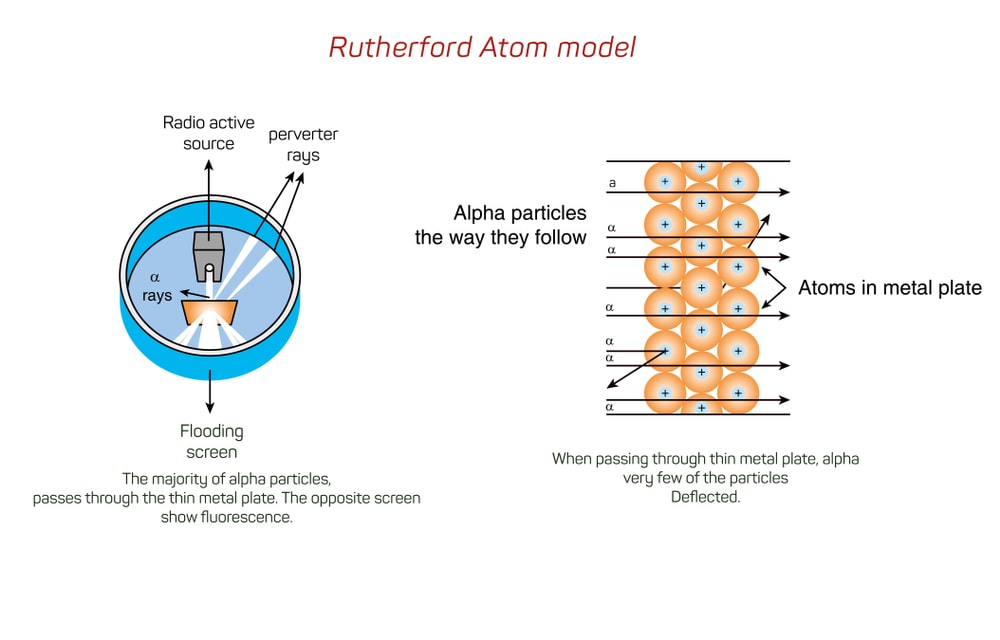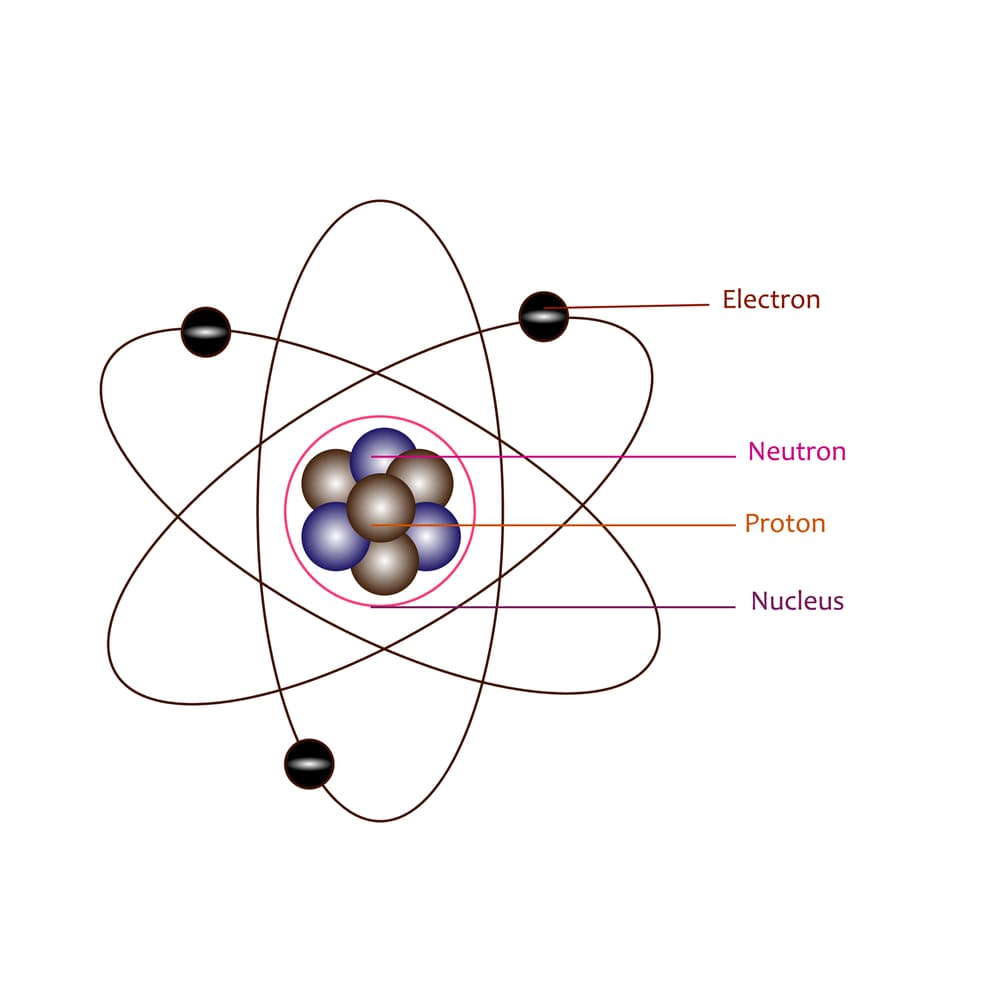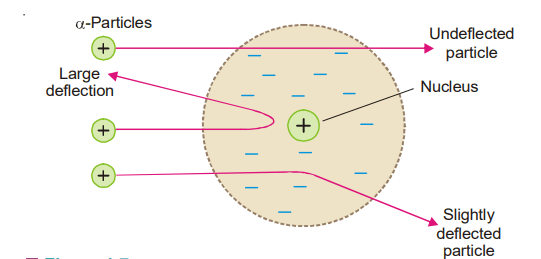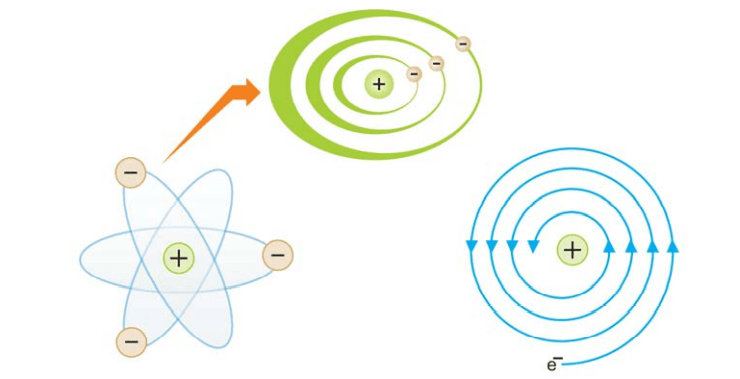Rutherford’s atomic model: After discovering that an atom includes electrons and a positive ion, Rutherford set out to discover how and where they were placed within the atom. Rutherford and Marsden used the apparatus shown in Figure 1 to conduct their famous Alpha Particle-Scattering Experiment in 1909. They used a radioactive source to fire a stream of extremely energetic -particles against a thin gold foil with a circular fluorescent zinc sulphide screen surrounding it. A small flash of light was created whenever a -particle collided with the screen.

Rutherford and Marsden noticed that most of the α-particles passed straight through the gold foil and thus produced a flash on the screen behind it. This meant gold atoms had a structure with a lot of vacant space. Tiny flashes were also observed on various parts of the screen, even in front of the gold foil, much to their surprise. This demonstrated that gold atoms deflected or ‘scattered’-particles at enormous angles, with some of them returning to the source. Rutherford suggested a model of the atom named after him based on these discoveries. This is also called the Nuclear Atom. According to it :


- Atom has a tiny dense central core or the nucleus which contains practically the entire mass of the atom, leaving the rest of the atom almost empty. The diameter of the nucleus is about 10-13 cm as compared to that of the atom 10-8 cm. If the nucleus were the size of a football, the entire atom would have a diameter of about 5 miles. It was this empty space around the nucleus that allowed the α-particles to pass through undeflected.
- The entire positive charge of the atom is located on the nucleus, while electrons were distributed in vacant space around it. It was due to the presence of the positive charge on the nucleus that α-particle (He2+) were repelled by it and scattered in all directions.
- The electrons were moving in orbits or closed circular paths around the nucleus like planets around the sun.

Weakness of Rutherford Atomic Model
It was a mistake to assume that electrons orbited around the nucleus. If a charged particle accelerates around an oppositely charged particle, the former will emit energy, according to classical electromagnetic theory. When an electron emits energy, its speed decreases and it spirals downward, eventually dropping into the nucleus. This does not occur since the atom would then be unstable, which it is not. Rutherford’s Atomic Model has a major flaw in this regard.